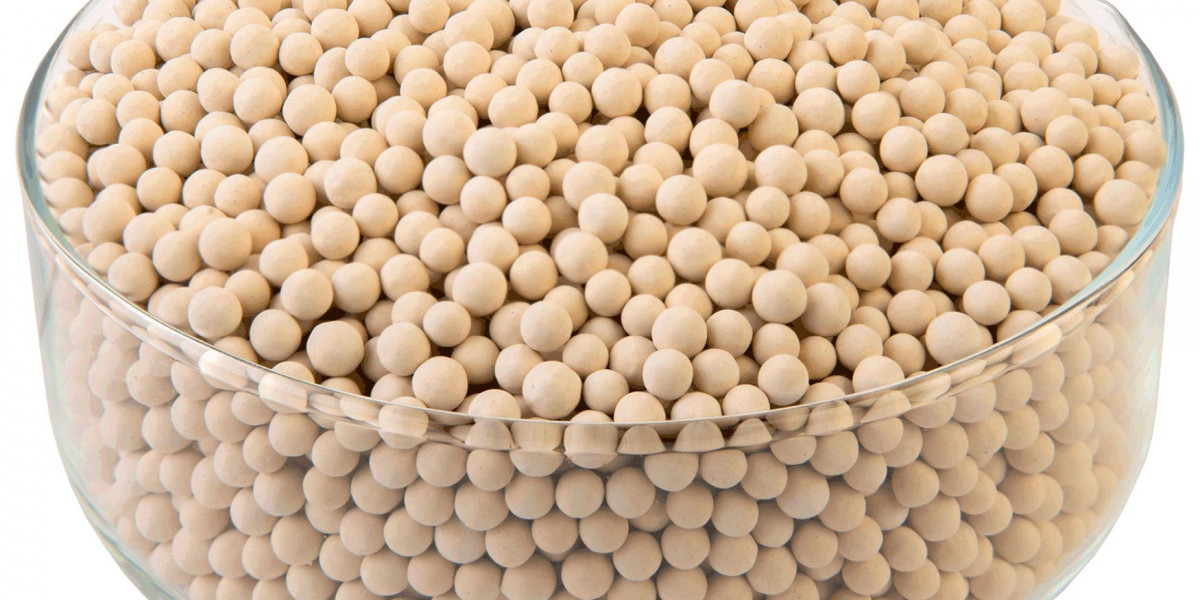As global awareness of water scarcity and environmental pollution grows, industries are increasingly turning to adsorbent solutions to address pressing challenges in water purification, waste treatment, and environmental compliance. The rising concerns about water quality, the need for sustainable resource management, and the implementation of stricter environmental regulations are driving demand for advanced adsorbents across multiple sectors. These materials play a pivotal role in improving water quality, enhancing waste management processes, and meeting increasingly stringent environmental standards, positioning the adsorbent market for significant growth in the coming years.
Rising Water Scarcity and the Role of Adsorbents in Water Treatment
Water scarcity has become one of the most critical global challenges, affecting millions of people worldwide. According to reports from the United Nations, nearly 2 billion people live in countries experiencing high water stress, and this number is expected to rise as populations grow and the effects of climate change intensify. As fresh water supplies dwindle and water quality deteriorates, there is a growing need for effective water treatment solutions. This is where adsorbentsmaterials that can selectively bind to contaminants and remove them from waterare playing an essential role.
Adsorbents such as activated carbon, zeolites, and resin-based materials are widely used to purify water, removing pollutants like heavy metals, organic compounds, and toxins. These materials are particularly effective in addressing the challenges posed by industrial wastewater, agricultural runoff, and household waste. By improving the efficiency of water filtration systems, adsorbents help ensure that water remains safe for consumption, agriculture, and industrial use.
One of the most significant drivers of demand in the water treatment sector is the need for solutions that can remove emerging contaminants, such as pharmaceuticals, personal care products, and endocrine-disrupting chemicals. Traditional water treatment methods often struggle to address these new pollutants, creating an opportunity for adsorbent technologies that can target specific chemicals with high precision.
For example, adsorbents made from natural materials like activated carbon derived from coconut shells or bamboo are increasingly being used in municipal water treatment plants to remove organic contaminants. Similarly, more advanced adsorbent technologies, such as metal-organic frameworks (MOFs), are gaining traction due to their ability to capture and remove heavy metals and other toxic substances from water at lower concentrations.
Environmental Compliance and Stricter Regulations Driving Adsorbent Demand
In addition to the challenges of water scarcity, the adsorbent market is being shaped by growing regulatory pressures to reduce pollution and ensure compliance with environmental standards. Governments worldwide are implementing stricter regulations related to air and water quality, waste management, and the reduction of industrial emissions. These regulations are pushing industries to adopt more sustainable practices, including the use of adsorbents in pollution control, waste treatment, and resource recovery.
For example, industries such as petrochemicals, food processing, and mining often generate hazardous waste and contaminants that require specialized treatment. Adsorbents are used to capture and remove pollutants from industrial effluents, air emissions, and wastewater, helping companies comply with environmental laws and avoid penalties.
In the case of air pollution, adsorbents are widely used in air purification systems to remove particulate matter, volatile organic compounds (VOCs), and other harmful gases from industrial exhaust streams. With increasing concerns about the health effects of air pollution, regulatory authorities are imposing stricter standards for air quality, further boosting the demand for adsorbent-based solutions in industries ranging from manufacturing to transportation.
Similarly, regulations on water quality and wastewater treatment are becoming more stringent, driving the adoption of advanced adsorbent materials in industries that discharge effluents into water bodies. Adsorbents that can efficiently remove toxic chemicals, heavy metals, and pharmaceuticals from wastewater are in high demand as industries seek to meet these more rigorous standards. In some regions, failure to comply with wastewater treatment regulations can lead to severe penalties, environmental damage, and public health concerns, making the use of adsorbents a vital solution for industry players.
Innovations in Adsorbent Technologies and Sustainability
As the demand for adsorbent materials rises, there is an increasing focus on developing more sustainable and efficient adsorbents that can address the growing need for clean water, air, and waste management. Innovations in adsorbent technologies are not only improving the performance of adsorbents but also reducing their environmental impact and enhancing their cost-effectiveness.
Biodegradable Adsorbents: There is a strong shift toward biodegradable adsorbents that can break down naturally after use, reducing the environmental footprint associated with disposal. These adsorbents, made from renewable resources such as plant fibers, agricultural waste, and natural polymers, are increasingly being used in applications like water treatment and oil spill cleanup. Their ability to degrade without leaving harmful residues makes them an attractive alternative to traditional synthetic adsorbents.
Energy-Efficient Regeneration Processes: Regeneration of spent adsorbents is a critical step in ensuring the sustainability of adsorbent-based systems. Traditionally, regenerating adsorbents, especially activated carbon, required high-energy processes that contributed to operational costs and environmental impact. However, new energy-efficient regeneration techniques, such as electrochemical regeneration and microwave-assisted processes, are reducing energy consumption and enhancing the overall sustainability of adsorbent use.
Advanced Materials for Specific Applications: The development of advanced adsorbent materials, such as metal-organic frameworks (MOFs), graphene, and carbon nanotubes, is opening up new possibilities for more efficient and targeted adsorption. These materials offer significantly higher surface areas and adsorption capacities than traditional adsorbents, enabling them to capture contaminants at lower concentrations and provide more cost-effective solutions for industries like water treatment, air purification, and resource recovery.
The Role of Consumer Awareness and Corporate Responsibility
Consumer awareness of environmental issues, particularly water scarcity and pollution, is also playing a role in shaping the adsorbent market. As consumers become more conscious of the environmental impact of the products they use, they are increasingly seeking out companies that prioritize sustainability and environmental responsibility. This shift in consumer behavior is influencing the decisions of companies across various industries, driving them to adopt cleaner, more sustainable technologies, including adsorbents.
In response to this demand, many companies are investing in research and development to create more sustainable adsorbent materials, particularly those that are biodegradable, reusable, or made from renewable resources. Corporate social responsibility (CSR) initiatives are also pushing companies to adopt environmentally friendly practices and ensure compliance with environmental regulations, further fueling the growth of the adsorbent market.
Conclusion: The Future of the Adsorbent Market
The adsorbent market is experiencing strong growth, driven by the rising awareness of water scarcity, the need for more sustainable waste management solutions, and increasingly stringent environmental regulations. Adsorbents play a vital role in addressing the challenges of water purification, air quality control, and pollution reduction, making them indispensable in a wide range of industries.
With continued innovation in adsorbent technologies, including biodegradable materials, energy-efficient regeneration processes, and advanced adsorbent formulations, the market is well-positioned to meet the growing demand for sustainable solutions. As industries continue to adopt more eco-friendly practices and comply with environmental regulations, the adsorbent market will play a key role in helping to protect water resources, improve air quality, and reduce pollutioncontributing to a cleaner, more sustainable future.
Read more https://www.pristinemarketinsights.com/adsorbent-market-report









